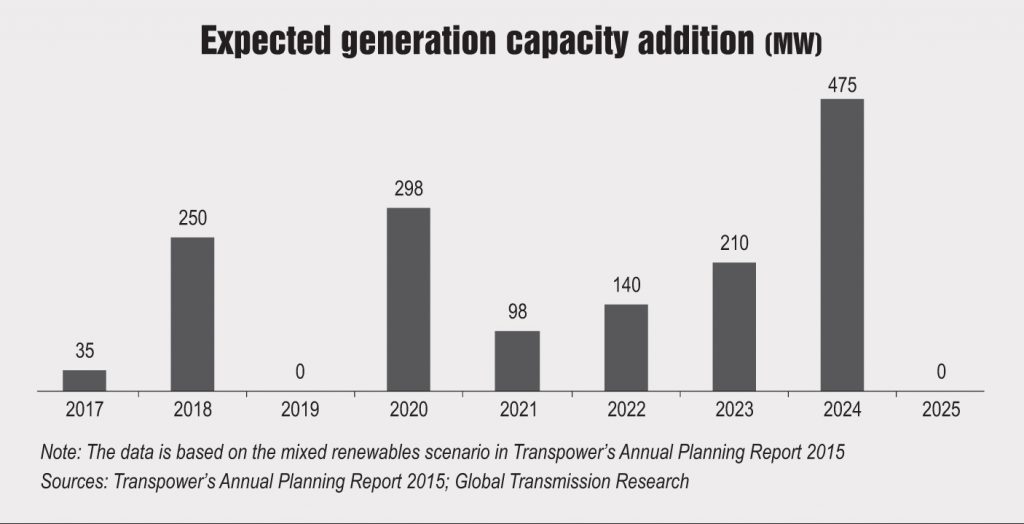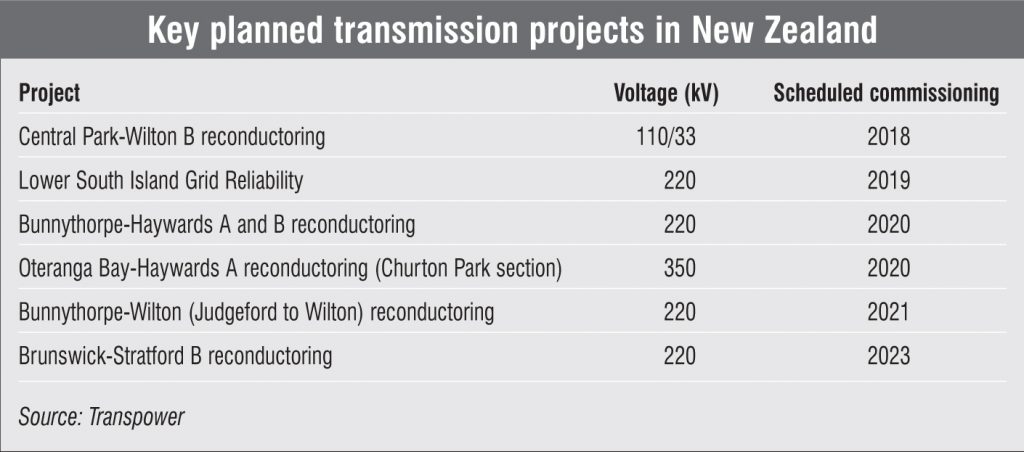
New Zealand is emerging as a global leader in the renewable energy sector. The country has ambitious goals and robust policies in place to increase the share of renewable energy in its energy mix to 90 per cent by 2025. It has also set an example for other countries with regard to renewable energy integration and is well on track both technologically and financially to achieve its energy transition targets. The rise of the digital economy has increased competition in the electricity sector, thus driving technological innovations.
To further increase its renewable energy generation, New Zealand needs to establish a flexible grid, and develop energy storage and backup generation solutions, particularly for dry years, when hydropower generation reduces significantly. Going forward, investments in the country’s transmission network will be driven by the need to renew and redeploy transmission assets for efficient renewable integration.
Power sector outlook
The country has a competitive electricity market. Currently, there are over 200 power stations in New Zealand and five large generation companies producing the majority of electricity. The country had an installed capacity of over 9,600 MW as of end-2015, of which over 57 per cent was contributed by hydro sources, 19 per cent by thermal, 18 per cent by renewable energy and the remaining 6 per cent by other sources such as cogeneration plants. The country’s renewable segment mainly comprises geothermal and wind energy.
The national transmission grid is owned and operated by Transpower, a state-owned enterprise. Transpower is responsible for new grid investments and all transmission development processes such as obtaining approval, arranging access and undertaking construction (subject to review and approval of the investment proposals by the Commerce Commission). The country’s two main islands, the North Island and the South Island, have their own power grids, which are interconnected via a high voltage direct current (HVDC) undersea cable. New Zealand has over 11,646 km of transmission lines, of which over 50 per cent are at the 220 kV level and over 40 per cent are at the 110 kV level. Transpower also owns 569 km of 350 kV HVDC overhead lines and 40 km of submarine cables, and over 700 km of transmission line infrastructure at the 66 kV and 50 kV levels. It has about 180 substations between the 66 kV and 220 kV levels.
The Electricity Authority has entered into a service provider contract with Transpower to ensure effective grid management. As a system operator, Transpower is also responsible for the real-time operation of the electricity system.
Generation focus
As of end-2015, renewable energy resources accounted for around 80 per cent of New Zealand’s total electricity generation output. The government’s renewable energy strategy aims to increase the share to 90 per cent by 2025.
During 2016, renewable generation increased largely due to favourable hydrological conditions, grid and generation investments and the decommissioning of the Southdown and Otahuhu thermal plants at the end of 2015. According to Transpower’s Annual Planning Report 2015 (Mixed Renewables Scenario), about 583 MW of new capacity is expected to be connected to the grid between 2016 and 2020. Another 923 MW is likely to be developed over the following five-year period. Some of the major planned projects are the Tauhara geothermal project Stage II (200 MW), the Turitea wind project (183 MW), the Wairau hydro project (70 MW), the Hawke’s Bay wind farm (65 MW) and Todd Energy’s gas plant (100 MW).
Transmission focus
Going forward, New Zealand will focus on strengthening and upgrading the existing grid network, which involves the replacement and reconductoring of the transmission system. According to Transpower’s 2015 Integrated Transmission Plan, the utility forecasts around NZD 1.47 billion of capex requirement for the 2016-20 period.
One of the key projects being implemented by the company is the Bunnythorpe-Haywards reconductoring project, which involves the upgradation of transmission lines between the Bunnythorpe substation near Palmerston North and the Haywards substation in Hutt Valley. Under the project, Transpower plans to replace the existing conductors with zebra aluminium conductor steel reinforced (ACSR) conductors rated to operate at 75 °C, and wires on the two transmission lines between the Bunnythorpe and Haywards substations in order to increase the capacity of each line by about 12 per cent. The project is expected to entail an investment of up to NZD 161 million, which is likely to increase consumers’ bills by an average of 0.041 cents per unit. The project is likely to be completed by 2020.
Another major project being implemented by the company is the Lower South Island Grid Reliability project, being built at a cost of NZD 62.4 million. Under the project, Transpower plans to connect the Gore substation to the existing 220 kV North Makarewa-Three Mile Hill line; install a new 220/110 kV transformer at the Gore substation; replace transformers at Invercargill and Roxburgh; install a series capacitor on one circuit of the North Makarewa-Three Mile Hill line to improve balance power flows into Southland; and install special protection systems on the 220 kV and 110 kV networks. The project will help reinforce the regional network in the Southland area during dry periods. The project will help improve power supply to around 95,000 people in Southland.
Another major project being implemented is the 350 kV Oteranga Bay-Haywards A reconductoring (Churton Park section) project, at a cost of NZD 28 million. The scope of work includes the replacement of conductors on the Churton Park section of the Oteranga Bay-Haywards A line. This line forms a part of the HVDC link between Benmore in the South Island and Haywards in the North Island. The project is scheduled to be completed by 2020. Some of the other key projects to be undertaken are the 110/33 kV Central Park-Wilton B, the 220 kV Bunnythorpe-Wilton (Judgeford to Wilton) and the 220 kV Brunswick-Stratford B reconductoring projects, all of which are scheduled to be commissioned by 2020-23.
Smart grid
The concept of intelligent electricity grids, involving the integration of new information and communication technologies with power transmission lines and distribution cables, is being actively explored by the New Zealand government. To meet its target of achieving 90 per cent renewable energy electricity generation by 2025, the government has identified technical standards to facilitate the development of a smart grid in the country. As per a report by the US-based consultancy Northeast Group, Australia and New Zealand are together expected to invest $ 6.1 billion in smart grid infrastructure between 2017 and 2027.
Going forward, New Zealand is planning to develop and expand projects such as smart metering, battery energy storage, advanced sensors and grid communications systems. Although progress on this front has been slow, the government is taking suitable measures to equip its grid with new technologies. It is also working on the Green Grid programme to explore future trends in renewable electricity generation and household demand, and develop in-depth knowledge of electricity networks and power management. The programme aims to ensure reliable, safe and affordable renewable energy access in New Zealand. It entails engaging with a wide range of end users, across the industry and the government, to ensure that changes to the network and new management practices are applied uniformly. The programme being undertaken by the University of Otago team, led by the Centre for Sustainability, focuses on exploring consumer demand for new technologies such as solar photovoltaic, electric vehicles (EVs) and smart appliances, as well as current patterns of demand and opportunities for demand-side management. The country has seen a rapid increase in the uptake of EVs, from around 1,000 as of end-2015 to around 2,500 at the end of 2016.
The country has set ambitious goals to cut its greenhouse gas emissions to 30 per cent below the 2005 levels by 2030, and has introduced strong policies to increase the number of EVs.
Conclusion
New Zealand’s electricity sector continues to focus on investments in renewable energy and upgradation of the transmission grid. The country’s renewable energy generation is in line with its goals. Timely realisation of these ambitious targets will further strengthen the country’s position as a global leader in the renewable energy market.





